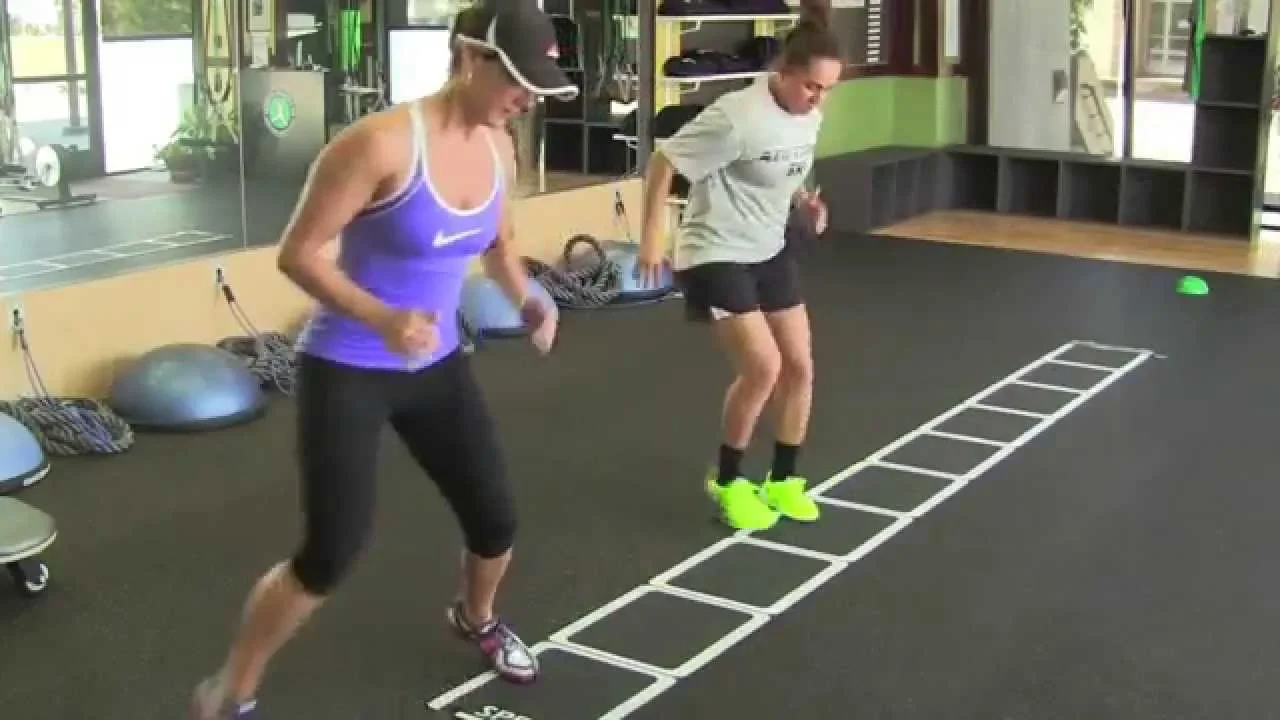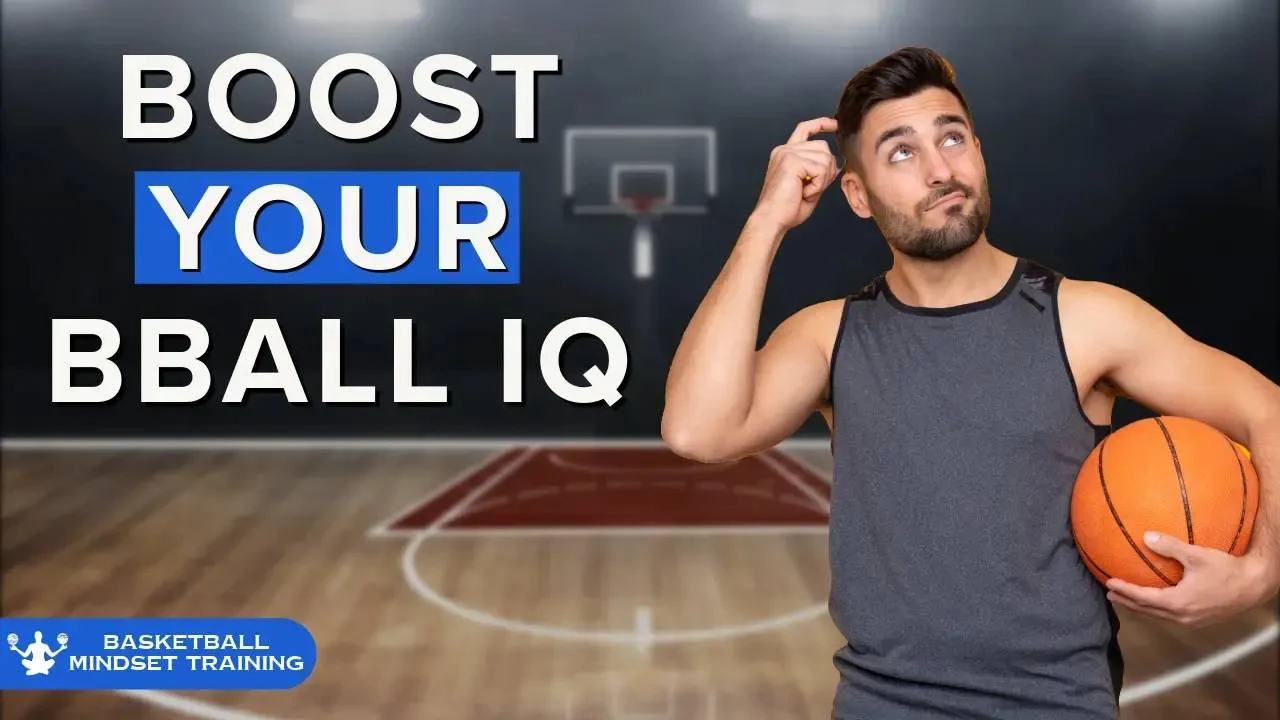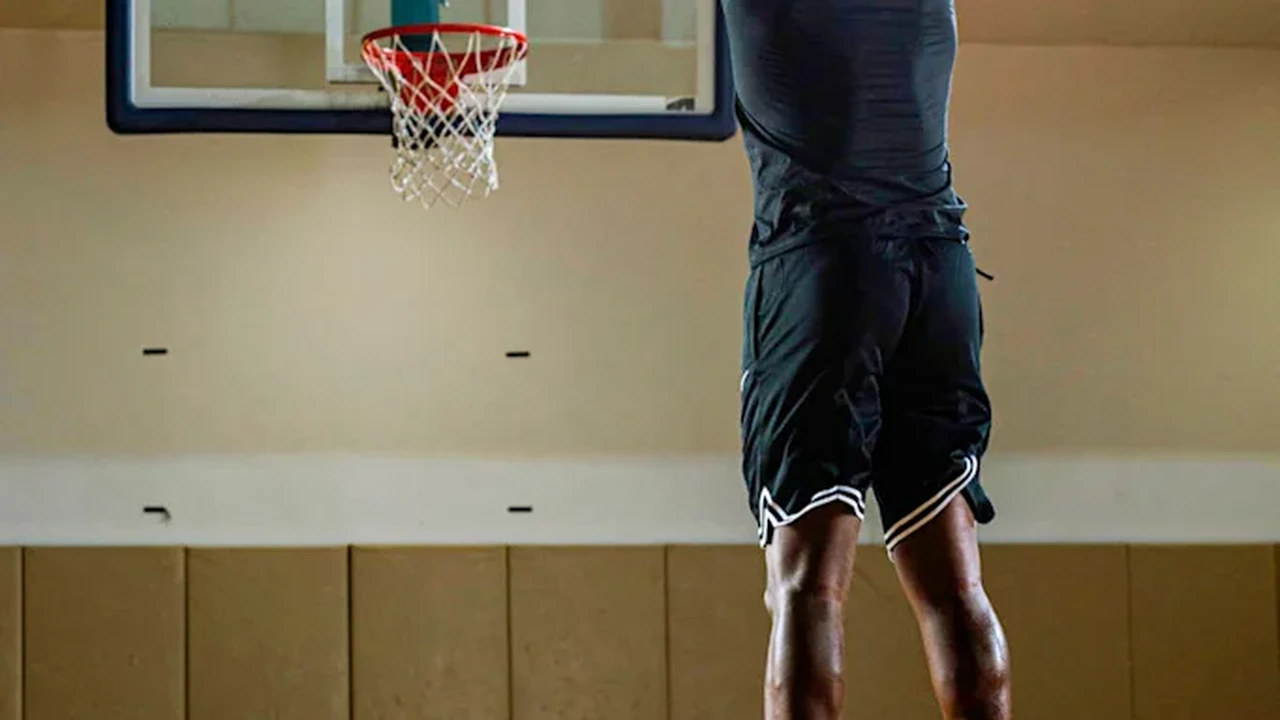Footwork Fundamentals_ Agility and Speed Drills

Introduction to Basketball Footwork The Foundation of Success
Basketball isn't just about towering height and incredible shooting range. It's about the unseen, the subtle movements that separate good players from great ones. Footwork, the very foundation upon which all other skills are built, is often overlooked. It's the silent language of the court, dictating your positioning, your ability to create space, and your defensive prowess. Think of it as the operating system of your basketball game. Without a solid foundation in footwork, even the most talented players will struggle to reach their full potential.
Why is footwork so critical? Imagine trying to build a skyscraper on a shaky foundation. It wouldn't stand for long, would it? Similarly, without proper footwork, your shooting form will falter under pressure, your dribbling will become predictable, and your defense will be easily exploited. Mastering footwork allows you to react quicker, move more efficiently, and ultimately, control the game. It's the key to unlocking your athletic potential and becoming a more complete basketball player.
This article will delve deep into the fundamentals of basketball footwork, focusing on agility and speed drills that will dramatically improve your game. We'll explore various techniques, providing detailed explanations and practical exercises you can incorporate into your training regimen. We'll also touch upon the importance of proper equipment and even recommend some specific products to enhance your training experience. Get ready to elevate your game from the ground up!
The Stance The Cornerstone of Effective Movement
Before you can execute any footwork drill, you need to understand the importance of a proper stance. Your stance is your foundation, your starting point for every movement on the court. A good stance allows you to react quickly, maintain balance, and generate power. Think of it as being ready to pounce like a coiled spring.
The ideal basketball stance involves keeping your feet shoulder-width apart, with a slight bend in your knees. Your weight should be evenly distributed between the balls of your feet, allowing you to move in any direction with ease. Keep your back straight, your chest up, and your head up, scanning the court. Your arms should be relaxed and ready to react, either to defend or to receive a pass. This stance provides a stable base for quick changes of direction, explosive movements, and effective defensive positioning.
Common mistakes to avoid include standing too upright, leaning too far forward, or having your feet too close together. Standing too upright limits your range of motion and makes it difficult to react quickly. Leaning too far forward throws off your balance and makes you vulnerable to being pushed off your spot. Having your feet too close together reduces your stability and makes it harder to change direction efficiently. Practice maintaining a proper stance in various situations, such as guarding an opponent, preparing to shoot, or waiting for a rebound. This will become second nature, allowing you to move with greater agility and speed.
Agility Ladder Drills Enhancing Foot Speed and Coordination
The agility ladder is an invaluable tool for developing foot speed, coordination, and agility. It forces you to focus on precise foot placements and quick movements, improving your overall body control. Think of it as a dance floor for your feet, where precision and rhythm are key.
There are countless agility ladder drills you can perform, but here are a few fundamental exercises to get you started:
- Two-Foot In: Simply step both feet inside each square of the ladder as quickly as possible. Focus on maintaining a consistent rhythm and keeping your feet light.
- One-Foot In: Step one foot inside each square of the ladder, alternating feet with each square. This drill challenges your coordination and forces you to control your body weight.
- Lateral Shuffle: Shuffle sideways through the ladder, stepping one foot in each square and then bringing the other foot to meet it. This drill improves your lateral movement and helps you develop quick feet in defensive situations.
- Icky Shuffle: This drill involves stepping into the first square with your right foot, then bringing your left foot into the same square. Then, step out of the square with your right foot, followed by your left foot. Repeat this pattern through the entire ladder. This drill is excellent for improving foot speed and coordination.
When performing agility ladder drills, focus on maintaining a low center of gravity, keeping your eyes up, and moving your feet as quickly as possible. Start slowly and gradually increase your speed as you become more comfortable with the exercises. Remember to emphasize proper technique over speed, as sloppy form can lead to injuries. Aim for precision and control, gradually increasing your speed as you improve.
Cone Drills Improving Change of Direction and Acceleration
Cone drills are essential for developing your ability to change direction quickly and accelerate efficiently. They simulate the unpredictable movements of a basketball game, forcing you to react to different situations and adapt your footwork accordingly. Think of cones as obstacles that you must navigate with speed and precision.
Here are a few effective cone drills you can incorporate into your training:
- Three-Cone Drill: Place three cones in a line, spaced about five yards apart. Start at the first cone, sprint to the second cone, then shuffle laterally to the third cone. Sprint back to the second cone, then shuffle laterally back to the first cone. This drill improves your ability to change direction quickly and maintain your speed.
- Four-Cone Drill (L Drill): Place four cones in an L shape, with each cone spaced about five yards apart. Start at the first cone, sprint to the second cone, then shuffle laterally to the third cone. Sprint to the fourth cone, then backpedal to the starting point. This drill challenges your agility, speed, and coordination.
- Figure Eight Drill: Place two cones about ten yards apart. Dribble the ball in a figure eight pattern around the cones, focusing on maintaining control of the ball and changing direction quickly. This drill improves your dribbling skills and your ability to move with the ball at high speeds.
When performing cone drills, focus on keeping your center of gravity low, using short, choppy steps to change direction, and accelerating explosively out of each turn. Remember to keep your eyes up and scan the court, anticipating your next move. Practice these drills with and without the ball to develop your overall agility and ball-handling skills.
Jump Rope Training Enhancing Footwork and Endurance
Jump rope training is a highly effective way to improve your footwork, coordination, and endurance. It's a low-impact exercise that can be done anywhere, making it a convenient and versatile addition to your training regimen. Think of the jump rope as a portable footwork coach, always ready to challenge you.
Jumping rope forces you to focus on your footwork, timing, and coordination. It strengthens your ankles, calves, and feet, improving your overall stability and balance. It also improves your cardiovascular endurance, allowing you to play harder for longer. There are various jump rope techniques you can use to target different aspects of your footwork.
Here are a few jump rope exercises to try:
- Basic Jump: Simply jump over the rope with both feet, focusing on maintaining a consistent rhythm and keeping your feet light.
- Alternate Foot Jump: Jump over the rope, alternating feet with each jump. This drill improves your coordination and balance.
- High Knees: Jump over the rope, bringing your knees up towards your chest with each jump. This drill strengthens your core and improves your leg strength.
- Double Unders: Jump over the rope, allowing the rope to pass under your feet twice with each jump. This drill requires excellent coordination and timing.
When jumping rope, focus on maintaining a good posture, keeping your elbows close to your body, and using your wrists to turn the rope. Start with short intervals and gradually increase the duration and intensity of your workouts. Remember to wear supportive shoes to protect your feet and ankles. A good jump rope session can significantly improve your footwork and overall athletic performance.
Plyometrics Explosive Power for Speed and Agility
Plyometrics, also known as jump training, are exercises that involve explosive movements, such as jumping, hopping, and bounding. They are designed to improve your power, speed, and agility by training your muscles to contract quickly and forcefully. Think of plyometrics as turbocharging your muscles for explosive performance.
Plyometric exercises work by utilizing the stretch-shortening cycle, which involves a rapid eccentric (lengthening) contraction followed by an immediate concentric (shortening) contraction. This process allows you to generate more power and jump higher, run faster, and change direction more quickly. However, plyometrics can be demanding on your joints, so it's important to start slowly and gradually increase the intensity of your workouts.
Here are a few plyometric exercises suitable for basketball players:
- Box Jumps: Jump onto a box of varying heights, landing softly with both feet. This drill improves your jumping power and explosiveness.
- Lateral Box Jumps: Jump laterally onto a box, landing softly with one foot. This drill improves your lateral agility and explosiveness.
- Depth Jumps: Step off a box and immediately jump as high as possible upon landing. This drill improves your reactive strength and jumping power.
- Bounding: Run and jump, covering as much distance as possible with each stride. This drill improves your running speed and explosiveness.
When performing plyometric exercises, focus on landing softly, using proper form, and gradually increasing the intensity of your workouts. It's essential to warm up properly before performing plyometrics and to cool down afterward. Listen to your body and avoid pushing yourself too hard, especially when you are first starting out. Proper plyometric training can significantly enhance your speed, agility, and jumping ability on the basketball court.
Specific Product Recommendations for Footwork Training
To maximize your footwork training, consider investing in some specific products that can enhance your performance and help you achieve your goals. Here are a few recommendations:
Agility Ladder Recommendations
Product: Pro Agility Ladder by SKLZ
Use Case: This agility ladder is durable, adjustable, and perfect for improving foot speed, coordination, and agility. It's suitable for athletes of all levels.
Product Comparison: Compared to cheaper alternatives, the SKLZ Pro Agility Ladder is made from high-quality materials that can withstand heavy use. It also features adjustable rungs, allowing you to customize the spacing to suit your needs.
Details: The SKLZ Pro Agility Ladder is made from durable nylon webbing and features flat plastic rungs. It comes with a carrying bag for easy storage and transportation.
Pricing: Approximately $30-$40.
Cone Recommendations
Product: Disc Cones by Champion Sports
Use Case: These disc cones are versatile and can be used for a variety of drills to improve your change of direction, acceleration, and agility. They are also highly visible and easy to store.
Product Comparison: Compared to taller cones, disc cones are less likely to be knocked over and are easier to store. They are also more affordable than taller cones.
Details: The Champion Sports Disc Cones are made from durable polyethylene and come in a variety of colors. They are lightweight and easy to carry.
Pricing: Approximately $15-$25 for a set of 50.
Jump Rope Recommendations
Product: EliteSRS Bullet COMP Speed Rope
Use Case: This speed rope is designed for high-intensity workouts and is perfect for improving your footwork, coordination, and endurance. It features a lightweight design and smooth rotation.
Product Comparison: Compared to basic jump ropes, the EliteSRS Bullet COMP Speed Rope is designed for speed and efficiency. It features a ball-bearing system that allows for smooth and fast rotations.
Details: The EliteSRS Bullet COMP Speed Rope features a lightweight aluminum handle and a durable steel cable. It is adjustable to fit different heights.
Pricing: Approximately $30-$40.
Shoes for Agility and Speed Training
Product: Nike Metcon Series
Use Case: The Nike Metcon series are training shoes designed for high-intensity workouts, including agility drills and plyometrics. They provide excellent support, stability, and traction.
Product Comparison: Compared to running shoes, the Nike Metcon series offers more stability and support, making them ideal for lateral movements and explosive exercises.
Details: The Nike Metcon shoes feature a flat, stable platform, durable construction, and excellent traction. They are designed to withstand the demands of high-intensity training.
Pricing: Approximately $100-$150.
Integrating Footwork Drills into Your Training Routine
Consistency is key when it comes to improving your footwork. Incorporate these drills into your training routine at least two to three times per week to see significant improvements. Start with shorter sessions and gradually increase the duration and intensity as you become more comfortable.
A sample footwork training routine might look like this:
- Warm-up: 5-10 minutes of light cardio, such as jogging or jumping jacks.
- Agility Ladder Drills: 10-15 minutes of various agility ladder exercises.
- Cone Drills: 10-15 minutes of various cone drills.
- Jump Rope Training: 10-15 minutes of various jump rope exercises.
- Plyometrics: 10-15 minutes of various plyometric exercises.
- Cool-down: 5-10 minutes of stretching.
Remember to listen to your body and adjust the routine as needed. Don't be afraid to experiment with different drills and techniques to find what works best for you. The key is to stay consistent and to focus on improving your footwork with each and every workout.
Mental Toughness The Unsung Hero of Footwork
While physical drills are essential, don't underestimate the importance of mental toughness in developing your footwork. Footwork requires focus, concentration, and a willingness to push yourself beyond your comfort zone. It's about training your mind to react quickly and efficiently in demanding situations.
Visualize yourself performing the drills correctly, focusing on your foot placements, your body position, and your overall movement. Practice staying calm and focused under pressure, even when you are fatigued. Develop a positive mindset and believe in your ability to improve. Mental toughness is the invisible force that will help you overcome challenges and reach your full potential.
Consider incorporating mindfulness techniques into your training routine to improve your focus and concentration. Practice deep breathing exercises to calm your nerves and reduce stress. Set realistic goals and celebrate your progress along the way. Remember that every small improvement is a step in the right direction. With dedication and mental toughness, you can master the art of footwork and become a more complete and effective basketball player.
Beyond the Drills Applying Footwork in Game Situations
Ultimately, the goal of footwork training is to improve your performance in actual game situations. It's not enough to be able to perform the drills perfectly in a controlled environment. You need to be able to translate those skills to the unpredictable and dynamic environment of a basketball game.
Practice incorporating your footwork skills into your offensive and defensive plays. Use your agility to create space for yourself and your teammates. Use your speed to drive to the basket and finish strong. Use your lateral movement to stay in front of your opponent and disrupt their offense. The more you practice applying your footwork skills in game situations, the more natural and instinctive they will become.
Watch film of professional basketball players and analyze their footwork. Pay attention to how they use their feet to create space, change direction, and defend their opponents. Try to emulate their techniques in your own game. The key is to constantly strive to improve your footwork and to find new ways to apply it to your game. With dedication and practice, you can become a master of footwork and take your basketball game to the next level.
:max_bytes(150000):strip_icc()/277019-baked-pork-chops-with-cream-of-mushroom-soup-DDMFS-beauty-4x3-BG-7505-5762b731cf30447d9cbbbbbf387beafa.jpg)






